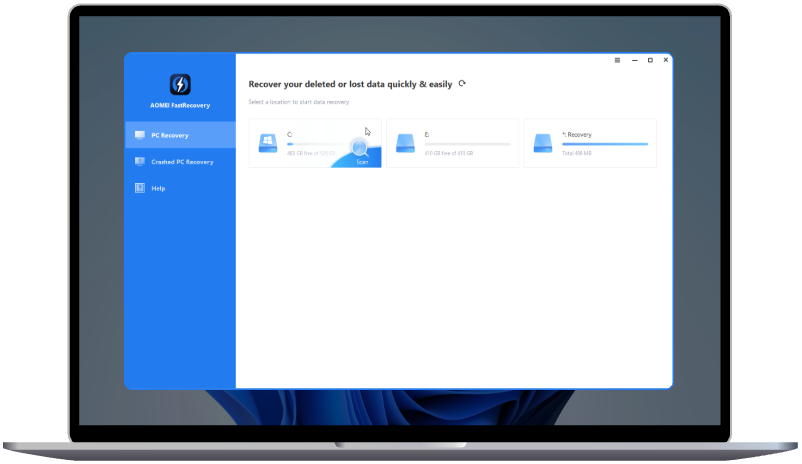Switching Back to Big Sur: Monterey Downgrade Guide
Discover step-by-step instructions for downgrading from Monterey to Big Sur and smoothly transitioning back to your preferred macOS version.
In today's digital landscape, the need to downgrade from Monterey to Big Sur arises for various reasons, whether it's compatibility issues with existing software or personal preference for a previous version. In this guide, we'll explore the process of reverting from Monterey to Big Sur, including common challenges, causes, and step-by-step solutions.
Understanding the Downgrade Process
Downgrading from Monterey to Big Sur involves reverting to a previous macOS version, requiring careful consideration and preparation to ensure a smooth transition. While Monterey introduces new features and enhancements, some users may encounter compatibility issues or performance concerns, prompting the need to switch back to Big Sur.
Exploring the Challenges
Identifying Compatibility Issues
One of the primary challenges users face when reverting from Monterey to Big Sur is compatibility issues with existing software and hardware. Monterey introduces significant changes that may render certain applications or peripherals incompatible with the new operating system, necessitating a return to Big Sur for seamless functionality.
Data Backup and Restoration
Another challenge lies in preserving and restoring data during the downgrade process. Without adequate backup measures in place, users risk losing important files, documents, and settings when reverting to a previous macOS version.
System Stability and Performance
Downgrading from Monterey to Big Sur requires careful consideration of system stability and performance implications. Changes introduced in Monterey may have optimized system performance, and reverting to Big Sur could potentially impact overall system stability and responsiveness.
Causes of Compatibility Issues
Software Incompatibility
Software developers may not have updated their applications to be compatible with Monterey, leading to compatibility issues and potential system errors when running certain programs.
Driver Incompatibility
Hardware peripherals such as printers, scanners, and graphics cards may require updated drivers to function correctly with Monterey. Incompatibility with existing drivers can result in device malfunctions or system instability.
System Configuration Changes
Monterey introduces significant changes to system configuration and security features, potentially affecting compatibility with older software versions and third-party applications.
Solutions for a Smooth Downgrade
1. Data Backup
Before initiating the downgrade process, perform a comprehensive backup of your data using Time Machine or a third-party backup solution. Ensure that all essential files, documents, and settings are securely stored to facilitate seamless restoration post-downgrade.
2. macOS Installation Media
Obtain a copy of the Big Sur installation media or create a bootable USB drive containing the Big Sur installer. This will enable you to reinstall Big Sur on your system after removing Monterey.
3. Clean Installation
Consider performing a clean installation of Big Sur rather than upgrading directly from Monterey. A clean installation ensures a fresh start and minimizes the risk of compatibility issues lingering from the previous operating system.
4. Application Compatibility
Check the compatibility of your essential applications with Big Sur before initiating the downgrade process. Visit the developers' websites or contact support to confirm compatibility and obtain updated versions if necessary.
5. System Testing
After reverting to Big Sur, thoroughly test your system to ensure all hardware peripherals, applications, and settings function correctly. Address any compatibility issues promptly to prevent disruptions to your workflow.
Recommendation: AOMEI Partition Assistant Professional
AOMEI Partition Assistant Professional offers a comprehensive solution for managing disk partitions and optimizing system performance. With features such as partition resizing, disk cloning, and data migration, AOMEI Partition Assistant Professional empowers users to effectively manage their storage resources and streamline system operations. Its intuitive interface and advanced functionality make it a valuable tool for both novice and experienced users alike.
Key Features:
- Partition Resizing: Adjust partition sizes to optimize disk space allocation and improve system performance.
- Disk Cloning: Create exact copies of disks or partitions for data backup, system migration, or disk upgrade purposes.
- Data Migration: Seamlessly transfer data between different storage devices or partitions without data loss or corruption.
- Partition Recovery: Recover lost or deleted partitions and restore data from damaged or inaccessible storage media.
Technical Terms Explained
- Bootable USB Drive: A USB flash drive containing an operating system installer that enables users to boot their computer and perform system installations or repairs.
- Clean Installation: Installing an operating system on a computer's hard drive without upgrading from a previous version or retaining existing files and settings.
- Compatibility Issues: Problems arising from the inability of software or hardware components to function together as expected due to differences in specifications or configurations.
- Driver Incompatibility: A situation where a hardware device's driver software is not compatible with the operating system, resulting in device malfunctions or system instability.
- System Configuration: The specific settings and parameters that define how a computer system operates, including hardware configurations, software settings, and network preferences.
Tips for a Successful Downgrade
- Plan Ahead: Before initiating the downgrade process, thoroughly research compatibility issues and backup options to mitigate potential risks.
- Backup Regularly: Maintain regular backups of your data to safeguard against data loss and facilitate system restoration if needed.
- Test Compatibility: Test critical applications and hardware peripherals for compatibility with the target macOS version before committing to the downgrade.
Conclusion
Downgrading from Monterey to Big Sur requires careful planning, preparation, and execution to ensure a smooth transition and minimize disruptions to your workflow. By following the recommended solutions and best practices outlined in this guide, you can successfully revert to Big Sur and maintain optimal system performance and compatibility.
FAQs
Q: Can I downgrade from Monterey to Big Sur without losing my data? A: Yes, performing a comprehensive backup of your data before initiating the downgrade process ensures that your files and settings are securely stored and can be restored post-downgrade if needed.
Q: Will reverting to Big Sur affect my system's performance? A: While reverting to Big Sur may result in minor adjustments to system performance, thorough testing and optimization can help mitigate any potential impacts on system stability and responsiveness.
Q: How do I create a bootable USB drive for installing Big Sur? A: You can create a bootable USB drive containing the Big Sur installer using the Disk Utility application on macOS or third-party software tools available online.
Q: What should I do if I encounter compatibility issues after downgrading to Big Sur? A: If you encounter compatibility issues after downgrading to Big Sur, consider updating your applications and drivers to the latest versions compatible with the operating system. Additionally, consult online forums and community resources for troubleshooting assistance.
Q: Is it possible to revert to Monterey after downgrading to Big Sur? A: Reverting to Monterey after downgrading to Big Sur may be possible but requires a clean installation of Monterey and restoration of backed-up data. Ensure that you have adequate backups and follow the necessary steps for system restoration.

